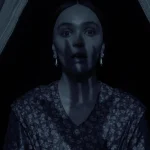Brazil (1985)

Terry Gilliam’s “Brazil,” released in 1985, is a seminal film in the realm of dystopian science fiction. Renowned for its unique visual style and satirical take on bureaucracy and consumerism, “Brazil” has earned a place as a cult classic and remains a profound commentary on the nature of personal freedom and societal control. The film’s intricate narrative, imaginative world-building, and thematic depth contribute to its status as a landmark in cinematic history.
“Brazil” is set in a nightmarish, retro-futuristic world characterized by pervasive bureaucracy, oppressive technology, and a general atmosphere of societal decay. The film follows Sam Lowry (Jonathan Pryce), an everyman working as a low-level employee in the Ministry of Information. The Ministry is a sprawling, dystopian bureaucracy where paperwork, red tape, and inefficient procedures dominate everyday life.
Sam lives a mundane life, daydreaming of heroic escapades and romantic ideals, until he becomes entangled in a case of mistaken identity. When a clerical error mistakenly identifies an innocent man as a terrorist, Sam is thrust into a convoluted conspiracy involving a mysterious resistance group known as the “Underground” and a shadowy figure named Harry Tuttle (Robert De Niro). As Sam delves deeper into this dark web, he becomes increasingly disillusioned with the oppressive systems around him and the superficiality of his own existence.
The film’s narrative intertwines elements of surrealism, political satire, and personal tragedy. Sam’s journey is marked by a series of bizarre and often absurd encounters, reflecting his struggle to navigate and resist the suffocating bureaucracy that governs his world. The climax of the film reveals the harsh reality of Sam’s predicament and culminates in a hauntingly ambiguous ending.
The characters in “Brazil” are as distinctive and multifaceted as the world they inhabit:
Sam Lowry (Jonathan Pryce): Jonathan Pryce’s portrayal of Sam Lowry is central to the film’s narrative. Sam is an idealistic dreamer trapped in a grim reality, and Pryce’s performance captures the character’s vulnerability, frustration, and growing sense of desperation. Sam’s journey from complacency to rebellion underscores the film’s exploration of individualism versus societal control.
Harry Tuttle (Robert De Niro): Robert De Niro’s role as Harry Tuttle, a renegade heating specialist, injects a dose of dark humor and rebellious spirit into the film. Tuttle is a charismatic figure who operates outside the confines of the bureaucratic system, representing a form of resistance against the pervasive control. De Niro’s performance adds a layer of intrigue and complexity to the film’s satirical critique of authority.
Mrs. Ida Lowry (Katherine Helmond): Katherine Helmond plays Mrs. Ida Lowry, Sam’s mother. Her character provides both comic relief and a critique of consumerist culture. As a wealthy socialite obsessed with materialistic values, Mrs. Lowry represents the superficiality and moral decay present in the film’s society.
Jill Layton (Kim Greist): Kim Greist portrays Jill Layton, a woman who becomes central to Sam’s quest for truth and freedom. Jill’s character embodies the theme of romantic idealism and serves as a catalyst for Sam’s awakening. Greist’s performance highlights the character’s strength and vulnerability, making her a key figure in Sam’s journey.

Terry Gilliam’s direction of “Brazil” is characterized by its distinctive visual and thematic elements. The film is known for its elaborate, surreal set designs and its blending of retro-futuristic aesthetics with dark, dystopian themes. Gilliam’s use of elaborate, industrial sets, intricate props, and a contrasting color palette creates a visually striking and immersive experience.
The film’s visual style is heavily influenced by expressionist art, with its exaggerated architectural designs, claustrophobic interiors, and a pervasive sense of decay and dysfunction. Gilliam’s direction employs a mix of practical effects and imaginative set pieces to create a world that is both fantastical and unsettling. The use of wide-angle lenses, dynamic camera movements, and unconventional framing further enhances the film’s surreal and disorienting atmosphere.
The film’s score, composed by Michael Kamen and featuring an eclectic mix of orchestral and electronic elements, complements the visual style by adding an additional layer of tension and emotional depth. The music underscores the film’s themes of alienation and rebellion, further immersing the audience in its dystopian world.

“Brazil” is rich in thematic content and symbolism, exploring several key concepts:
Bureaucracy and Control: One of the central themes of “Brazil” is the critique of bureaucratic systems and their impact on individual freedom. The film portrays a society where bureaucracy is all-encompassing and oppressive, reducing human beings to mere cogs in a vast, inefficient machine. The film’s satirical depiction of bureaucratic absurdities serves as a commentary on the dehumanizing effects of excessive regulation and control.
Surveillance and Technology: The film also addresses themes of surveillance and technological intrusion. The pervasive presence of surveillance devices and the omnipresent control of technology reflect concerns about privacy and personal autonomy. The film’s depiction of a society dominated by technological control highlights the tension between technological advancement and human freedom.
Romantic Idealism vs. Reality: Sam’s romantic daydreams contrast sharply with the grim reality of his world, highlighting the film’s exploration of idealism versus disillusionment. Sam’s aspirations for heroism and romance are juxtaposed with the harsh and oppressive conditions of his environment, underscoring the theme of personal versus societal conflict.
Freedom and Rebellion: The film’s narrative ultimately revolves around the quest for personal freedom and rebellion against an oppressive system. Sam’s journey from complacency to resistance reflects a broader struggle for autonomy and self-determination. The film’s ambiguous ending reinforces the idea that true freedom may remain elusive in a world dominated by control and conformity.

“Brazil” was released during a time of significant political and cultural change. The film’s critique of bureaucracy and surveillance resonated with contemporary concerns about government overreach and the impact of technology on society. The film’s release also coincided with the rise of post-modernist cinema, characterized by its emphasis on fragmented narratives, surrealism, and thematic complexity.
The film’s production was marked by a troubled development process, including conflicts between Gilliam and the studio over the final cut. Despite these challenges, “Brazil” emerged as a critically acclaimed work that has continued to influence and inspire filmmakers and audiences alike.

“Brazil” (1985) is a groundbreaking film that combines visionary direction, satirical storytelling, and a distinctive visual style to create a powerful commentary on bureaucracy, technology, and personal freedom. Terry Gilliam’s imaginative approach to filmmaking, coupled with compelling performances and a richly detailed world, has solidified “Brazil” as a timeless classic in the dystopian genre. Its exploration of themes related to control, surveillance, and rebellion remains relevant and thought-provoking, ensuring its enduring impact on cinema and culture. As a film that challenges conventions and offers a unique perspective on societal issues, “Brazil” continues to captivate and provoke audiences with its striking blend of surrealism and social critique.










